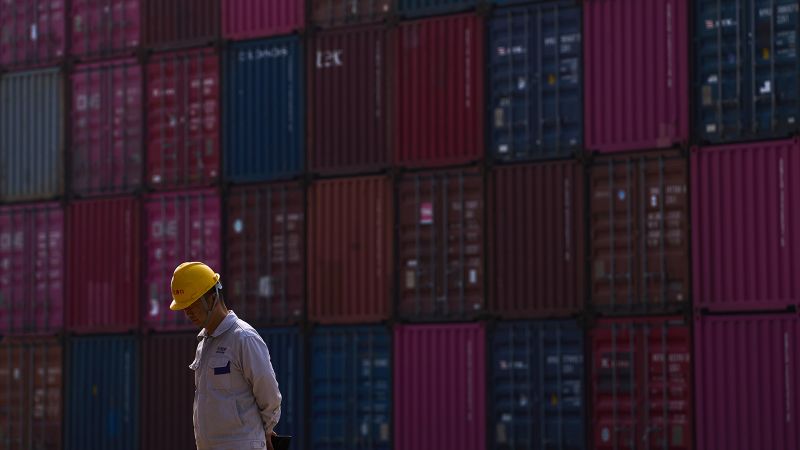In recent developments, the economic relationship between the United States and China has been thrust back into the spotlight, marked by accusations and tensions that threaten the fragile truce established just weeks prior. China has taken the initiative to accuse the United States of “provoking new economic and trade frictions,” responding to claims made by former President Donald Trump, who suggested that China had not adhered to an agreement reached between the two nations. This trade truce aimed to pause the ongoing tariff war that had placed substantial pressure on both economies.
In a statement issued on a Monday, the Chinese Commerce Ministry emphasized that the country was “strictly implementing” the terms of the trade negotiations, while attributing blame to the United States for actions perceived as undermining those agreements. The ministry’s comments further stated, “The United States has been unilaterally provoking new economic and trade frictions,” indicating a growing sense of instability within the bilateral economic ties between the superpowers.
China’s stern warning pointed to the potential for serious repercussions if the United States continued down its current path, with assertions that it would safeguard its legitimate rights and interests through resolute measures. Former President Trump’s rhetoric escalated the situation when he claimed on Truth Social that China had “TOTALLY VIOLATED ITS AGREEMENT WITH US,” expressing his frustration over the recent developments. He maintained that he had engaged in a swift deal with China to alleviate what he considered a precarious situation, and his disillusionment with the trade negotiations was palpable.
The tensions highlight a crucial turning point in the relations between these two influential nations, particularly in light of the unexpected trade truce previously achieved in Geneva which aimed to reduce the aggressive tariffs imposed by each side in April. Under this agreement, both parties were to utilize a 90-day window to negotiate a more comprehensive trade deal; however, the progress appears increasingly jeopardized as each side levels accusations of non-compliance.
A significant area of contention has arisen from China’s control over the export of rare earth minerals and related products. After the negotiations, US officials expected China to alleviate restrictions on these essential minerals that are pivotal for various industries, including electronics and defense. However, these restrictions have persisted, inciting the frustration of the Trump administration and leading to the imposition of additional measures against China.
As the narrative developed, Beijing retaliated by accusing the US of undermining the Geneva consensus, particularly after Washington issued warnings against the use of AI chips produced by Huawei, a major Chinese tech firm. Subsequently, tensions flared further as the US escalated its measures, limiting technology sales to China and placing restrictions on Chinese international students. Such actions indicated that the competition had transcended mere trade disputes.
China’s Commerce Ministry criticized these developments, asserting the discriminatory nature of the US’s recent actions, which included AI chip export restrictions and visa revocations of Chinese students. This exchange underscores the broader implications of the growing competition, as both nations grapple with the ramifications of their policies on domestic manufacturing and economic stability. Notably, an official survey indicated that China’s manufacturing sector had contracted for a second consecutive month, exacerbating the financial strain resulting from tariffs that currently stand high due to the trade war.
Moreover, the negotiations that took place in Geneva were intended to reduce mutual tariffs that had reached unprecedented heights. As part of the agreement, China was expected to suspend or remove non-tariff countermeasures that had been enacted since early April. However, China’s measures regarding the export controls on rare earths pose a significant challenge as they tighten control over crucial supply chains essential for high-tech industries both within and beyond its borders.
In light of these ongoing trade disputes, US Treasury Secretary Scott Bessent remarked on a specific instance during an interview, indicating perceptions that China was withholding products that it had previously agreed to relinquish. The complexity of these negotiations suggests that a higher-level intervention from leaders, including Trump and Chinese President Xi Jinping, may be necessary to navigate these turbulent waters.
As the dispute develops, China defends its export control policies, asserting their alignment with international practices and denying any intent to target specific countries. This multifaceted scenario reveals that the competition between the US and China encompasses far more than trade alone, impacting technology relations, scientific partnerships, and the overall landscape of international commerce. The continued dialogue from both sides will be crucial in determining the fate of their economic future.



